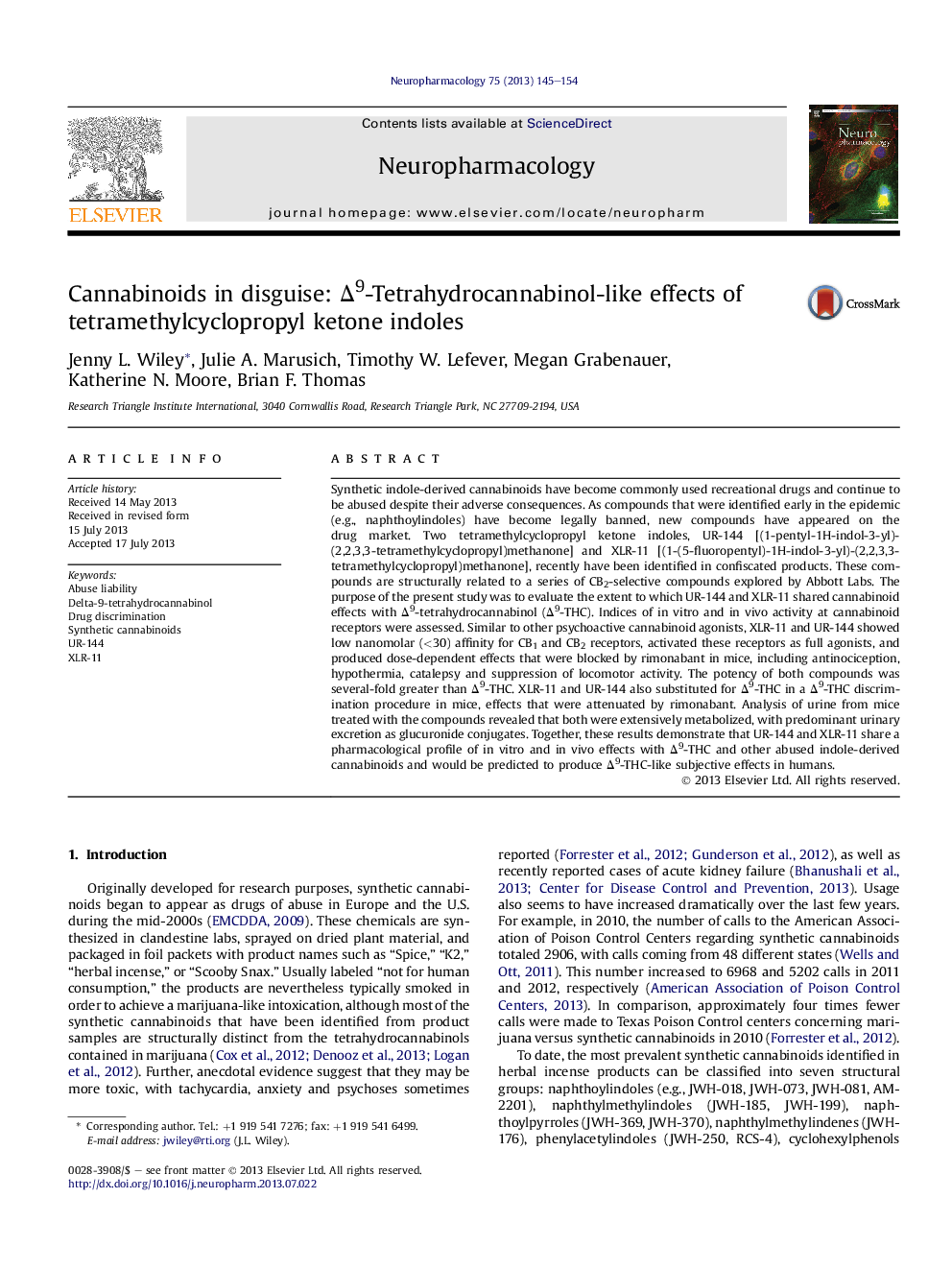| Article ID | Journal | Published Year | Pages | File Type |
|---|---|---|---|---|
| 2493351 | Neuropharmacology | 2013 | 10 Pages |
•The Δ9-THC-like effects of XLR-11 and UR-144 were studied in mice.•UR-144 and XLR-11 bind to both CB1 and CB2 receptors with nM affinity.•They also produced cannabimimetic in vivo effects in mice.•UR-144 and XLR-11 substituted for THC in mouse drug discrimination.•They would be predicted to produce THC-like subjective effects in humans.
Synthetic indole-derived cannabinoids have become commonly used recreational drugs and continue to be abused despite their adverse consequences. As compounds that were identified early in the epidemic (e.g., naphthoylindoles) have become legally banned, new compounds have appeared on the drug market. Two tetramethylcyclopropyl ketone indoles, UR-144 [(1-pentyl-1H-indol-3-yl)-(2,2,3,3-tetramethylcyclopropyl)methanone] and XLR-11 [(1-(5-fluoropentyl)-1H-indol-3-yl)-(2,2,3,3-tetramethylcyclopropyl)methanone], recently have been identified in confiscated products. These compounds are structurally related to a series of CB2-selective compounds explored by Abbott Labs. The purpose of the present study was to evaluate the extent to which UR-144 and XLR-11 shared cannabinoid effects with Δ9-tetrahydrocannabinol (Δ9-THC). Indices of in vitro and in vivo activity at cannabinoid receptors were assessed. Similar to other psychoactive cannabinoid agonists, XLR-11 and UR-144 showed low nanomolar (<30) affinity for CB1 and CB2 receptors, activated these receptors as full agonists, and produced dose-dependent effects that were blocked by rimonabant in mice, including antinociception, hypothermia, catalepsy and suppression of locomotor activity. The potency of both compounds was several-fold greater than Δ9-THC. XLR-11 and UR-144 also substituted for Δ9-THC in a Δ9-THC discrimination procedure in mice, effects that were attenuated by rimonabant. Analysis of urine from mice treated with the compounds revealed that both were extensively metabolized, with predominant urinary excretion as glucuronide conjugates. Together, these results demonstrate that UR-144 and XLR-11 share a pharmacological profile of in vitro and in vivo effects with Δ9-THC and other abused indole-derived cannabinoids and would be predicted to produce Δ9-THC-like subjective effects in humans.
